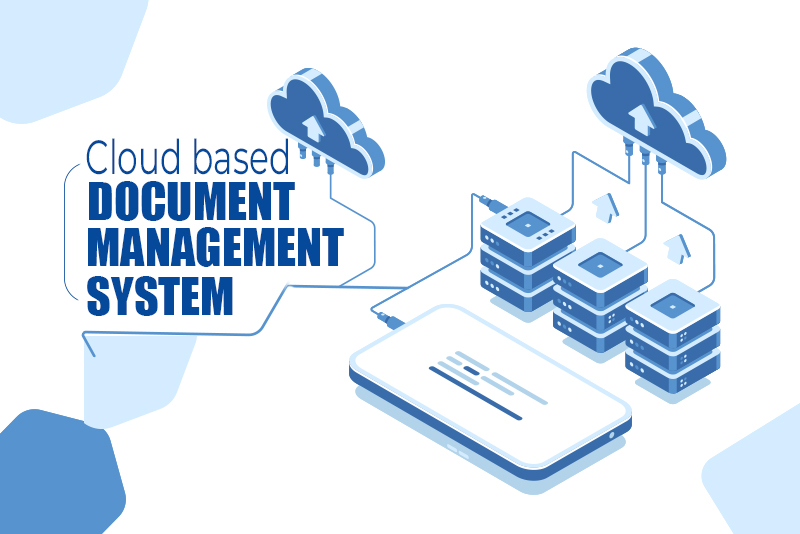Following the transition from paper to electronic documents, secure cloud-based document management systems have emerged as a great option to store and organize documents effectively. Business process outsourcing services continue to play a major role in this transition by helping organizations scan documents in bulk and integrate them into document hosting systems.
Benefits of a Cloud-based Document Management System
A document management system automates file storage, indexes documents for easy retrieval, provides collaboration tools, and allows users to access any document any time.
A Cloud Document Management System moves electronic file management to the web. With a web-based document storage system, organizations can save the costs for managing their own IT infrastructure documents and access, manage, and track their files and folders from virtually any location that has internet access.
Cloud-based document management offers many benefits for organizations:
- Automates document flow
- Enables managing documents efficiently with little effort
- Improves flexibility and scalability
- Provides secure, real-time access to documents over the internet from any location
- Frees up physical space and computer memory
- Makes records-keeping processes more efficient
- Saves time and money that would have been spent in searching for documents supports collaborative file sharing and authorized access
- Ensures document confidentiality and highest levels of security by storing data in encrypted form
- Makes remote work simple and secure
- Ensures backup and disaster recovery
Implementing cloud technologies may seem like a daunting task, but having the right support can make it much easier.
Steps to implement a cloud document management system
Do your research: It ‘s important to partner with a reliable document management service provider. Just like you need to do your research to choose the right business process outsourcing company, you should research cloud hosting services. Read user reviews to choose the right company. Make sure the company has a good reputation and evaluate the right measures in place to meet your requirements. Evaluate and compare cloud infrastructure and platform services reviews and ratings.
- Check data encryption: Unencrypted stored data is accessible to anyone. Cloud encryption is the process of encoding and transforming data before transferring it to the cloud. A data protection solution for your cloud environment must offer data encryption, data access control, key management, and certificate management, according to IBM. Key data security components in a cloud solution include data protection, data integrity, data classification and data activity monitoring, and data privacy and regulations. determines the encryption needs of the data you store in the cloud. For instance, sensitive files such as certain types of customer data, legal documents and medical information require encryption when you create a cloud solution.
Best practices to follow: - Encrypt your data before uploading it if the cloud service provider does not automatically encrypt the information
- Back up your cloud data locally or store the data on a separate cloud – this will protect your information if it is stored in the cloud and is corrupted.
- Check for 24/7/365 monitoring capabilities: Monitoring involves reviewing, managing, and overseeing all the workflows and processes involved with your cloud applications or infrastructure. This is crucial to improve security, support resource allocation, calculate cost, and extend scalability, and optimize your cloud environment ‘s performance. High-quality monitoring and rapid issue-reporting mitigates risks and make it easy to improve business continuity.
- Know how access controls work: Cloud storage with access control promotes flexibility in the way your organization can manage and protect your data. Keep in mind that strong authentication is a compulsory requirement for any cloud deployment. User authentication is the foundation for access control. Most cloud storage providers allow you to share access to your online folders with other users. Be sure you know in detail how this works, including user permissions to read a file or make change on it. Make sure administration and user selection and access rights are simple and consider how users will access data. It ‘s also important to be able view the complete audit trail and reports on all documents accessed.
- Consider amount of data stored: Among other things, the cost of cloud storage services is directly proportionate to the volume of data stored and how long it is stored. Cost is calculated per GB of data that is stored on the cloud. It ‘s important to have a realistic expectation of the size you need to store all your files.
Operational excellence, security, reliability, performance efficiency, cost efficiency and sustainability are the six pillars of software quality that organizations should consider for their cloud environments, according to the AWA Well-Architected Framework. Once you set up your cloud-based document management system, pick a good master password. Don ‘t reuse passwords or share them. Ensure that your critical files are backed up on the cloud to protect against unexpected loss.
Importance of the Right Support for Success
The extent of the cloud hosting service provider ‘s support is crucial for the success of your project. A Forbes article explains that internal support is also critical. Choose key team members based on knowledge, intelligence and adaptability. In addition to executive-level support to implement change and ‘remove roadblocks ‘, the article recommends having a strong project manager to assemble the team and move the project forward. In addition, a strong technical manager is necessary to ensure that things work with your current IT structure. Outsourcing services also provide excellent support to help organizations implement cloud-based document management systems.
Managed Outsource Solutions (MOS) provides an extensive range of services to meet the needs of various industries. From data entry, document scanning and document conversion to robotic process automation, our comprehensive support helps organizations streamline workflow business, reduce operational costs, and free up resources for other tasks.




